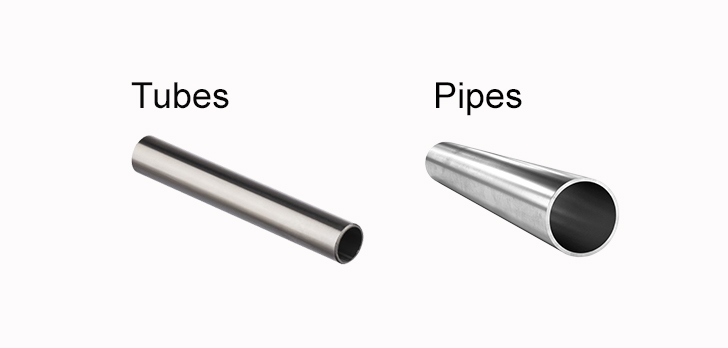
Corrosion is a silent killer that gradually erodes the performance and durability of pipes and tubes employed in numerous industries. Ranging from the oil and gas industry to chemical processing, water treatment, and many more, it is important to understand the factors and principles that cause the corrosion of these critical components to enhance safety and efficiency while reducing costs. This blog discusses the root of corrosion, the conditions that enhance it, and the rules of choosing and preserving corrosion resistant pipe tube systems.
Corrosion is a natural process that occurs when metals undergo a chemical change with their surroundings thus causing the deterioration of the material. This phenomenon can occur in various forms for example, rusting in iron and steel or pitting in stainless steel. Corrosion is not only surface degradation but leads to severe structural failures, leaks, and contamination which are dangerous to operations and safety.

Material Selection : Selecting the appropriate material for pipe & tube supply is the first step in the protection against corrosion. The materials that are used for the fabrication of these tubes are stainless steels and more preferentially the ASME tube specifications. Moreover, the duplex and super duplex stainless steel exhibit excellent resistance to stress corrosion cracking and pitting in harsh environments
Protective Coatings : One of the most common techniques for protecting metals against corrosive environments is the use of protective coatings. These coatings can be metallic for instance by the process of galvanization which involves coating with zinc or non-metallic for instance epoxy or polyurethane paints. The selection of the coating depends on the environmental conditions and the required durability of the protection.
Cathodic Protection : Cathodic protection is an electrochemical technique applied to prevent the corrosion of a metal surface where the surface is made into a cathode. This is done either by the application of sacrificial anodes which corrode in preference to the protected metal or by the application of an external current. It is most suitable in buried or submerged pipes and tubes.
Environmental Control : One of the effective ways of minimizing the corrosion of pipes and tubes is by regulating the conditions in which these structures are used. This comprises activities like reduction of humidity, regulation of temperature, and addition of corrosion inhibitors in the fluids that are in contact with the metal surfaces. Some good practices that are followed in industrial areas include; keeping the pH of the environment neutral and avoiding the use of corrosive chemicals.
The Role of Water in Corrosion : Water is a very important factor in the corrosion of pipes and tubes through making them to act as a conductor of electricity in the electrochemical reactions that cause rusting of steel pipes. It may contain dissolved gases such as oxygen and carbon dioxide that increases the corrosion rate, and various minerals and salts that cause localized corrosion. Corrosion rates depend on the pH of water, for instance, water with an acidic nature will cause corrosion on metals such as iron and steel while water with very high pH may cause other forms of corrosion. Moreover, corrosion rates are also affected by temperature; therefore, temperature control is very important in industrial systems.
Sulfate-Reducing Bacteria (SRB) Corrosion : Sulfate-Reducing Bacteria (SRB) are anaerobic microorganisms that are usually associated with buried or submerged pipelines. They release hydrogen sulfide (H2S) as a byproduct which is very damaging to metals causing microbiologically influenced corrosion (MIC). Pitting is a common effect of SRB-induced corrosion since the bacteria cause formation of deep cavities in the metal. Detection is done by checking for the levels of hydrogen sulfide and microbiological analysis. These are the use of chemical inhibitors, cathodic protection, and the use of materials that are not susceptible to SRB corrosion such as certain types of stainless steel or coatings.
Oil and Gas Industry : In the oil and gas industry, pipes and tubes are constantly exposed to harsh conditions, including saltwater, hydrogen sulfide, and extreme temperatures. The use of corrosion-resistant alloys and protective coatings is vital to prevent leaks and ensure the safe transport of hydrocarbons. Cathodic protection systems are also commonly employed for subsea pipelines
Chemical Processing Plants : Chemical processing plants often handle aggressive chemicals that can rapidly corrode standard steel. The selection of appropriate materials, such as high-nickel alloys or duplex stainless steels, is crucial. Regular monitoring and maintenance help to mitigate the risks associated with corrosive processes
Water Treatment Facilities : Water treatment facilities use pipes and tubes to transport and process water containing various impurities and treatment chemicals. The use of stainless steel and plastic-lined pipes can significantly reduce corrosion. Additionally, controlling the pH and chemical composition of the water helps to maintain the integrity of the system
Understanding the factors and principles affecting the corrosion of pipes and tubes is essential for ensuring the longevity and reliability of these critical components in various industries. By selecting appropriate materials, applying protective measures, and maintaining vigilant inspection and maintenance practices, it is possible to significantly reduce the impact of corrosion. Whether it's adhering to ASME tube standards or implementing advanced corrosion prevention techniques, taking proactive steps can safeguard infrastructure, enhance safety, and optimize operational efficiency
You can Contact Nufit Flanges at sales@nufitalloys.com to know more information about pipes and tubes, and how different factores affect them.